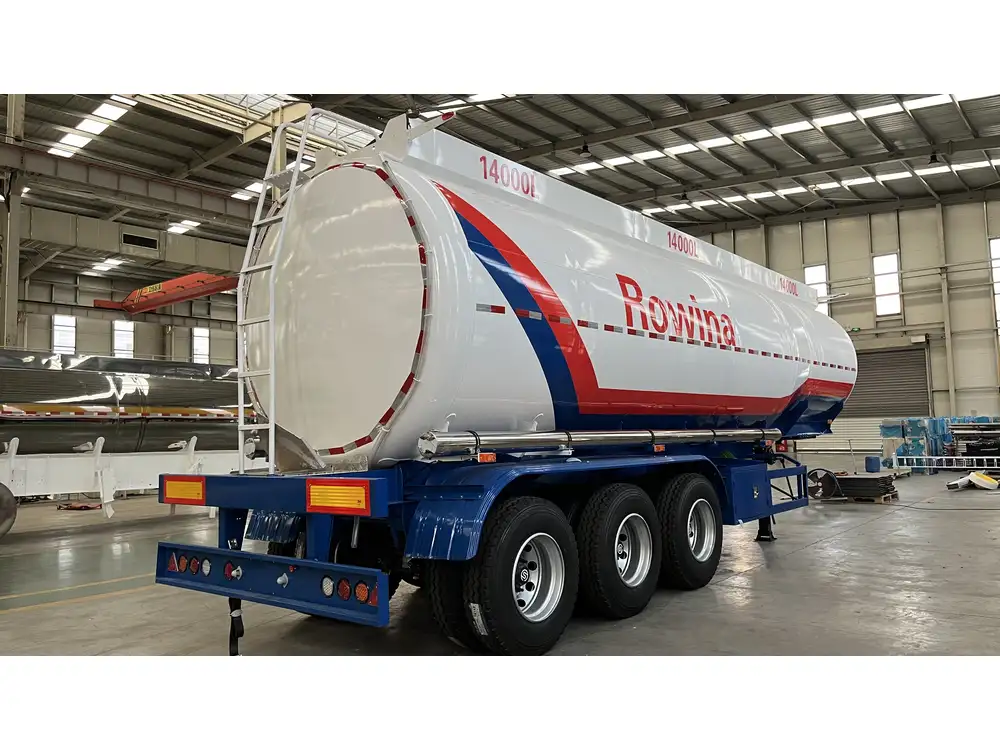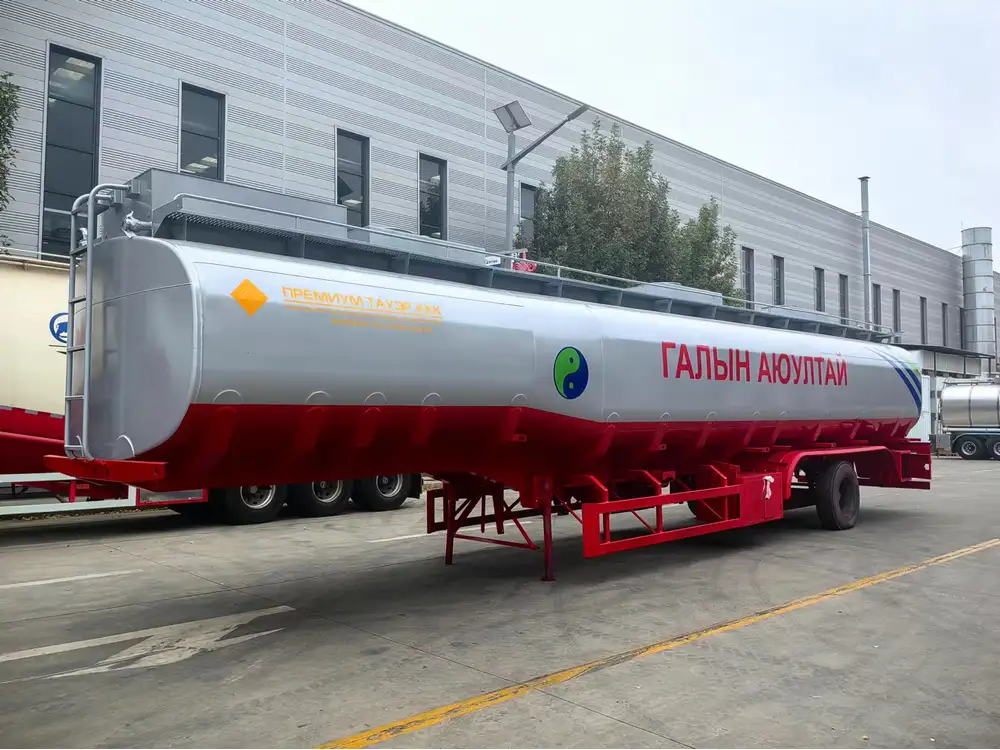The burgeoning demand for crude oil transport, especially in regions like Cameroon, has generated considerable interest in crude oil tankers. As manufacturers and suppliers in this domain, our goal is to provide comprehensive insights into acquiring a crude oil tanker in Cameroon, focusing on crucial factors such as specifications, market trends, operational considerations, and the unique attributes of each vessel on offer.
Understanding the Crude Oil Tanker Market in Cameroon
The crude oil market in Cameroon is not merely a burgeoning sector; it embodies potential growth precipitated by domestic and international demand. The West African nation is rich in oil reserves and stands to bolster its logistical capabilities through the acquisition of efficient tanker vessels.
Market Trends and Opportunities
- Rising Demand: As global energy needs escalate, the demand for crude oil transportation in Cameroon is expected to grow. Local refiners and international companies are increasingly looking for reliable modes of transport to move crude oil efficiently.
- Strategic Location: Cameroon’s strategic coastal location provides an advantageous shipping route, harboring immense potential for oil transportation through the Atlantic Ocean to major global markets.
- Investment Growth: The government’s focus on infrastructure development and foreign investments creates a fertile ground for expanding the fleet of oil tankers.

Key Specifications to Consider
When purchasing a crude oil tanker, we find it essential to understand the specifications that differentiate one vessel from another. Below is a detailed breakdown of terms and features significant to potential buyers.
| Specification | Description |
|---|---|
| Deadweight Tonnage (DWT) | The weight a ship can safely carry. Critical for determining the lift capacity. |
| Gross Tonnage (GT) | A measure of the overall internal volume of the vessel. Used for regulatory purposes. |
| Length Overall (LOA) | The total length of the vessel, impacting docking and sea navigation. |
| Beam Width | The width of the vessel at its widest point. Relates to stability. |
| Fuel Efficiency | Key indicator of operational costs – essential for budgeting. |
| Cargo Containment | Types of tanks (e.g., single hull vs. double hull) impacting safety. |
| Manned vs. Unmanned | Indicates crew requirements and associated expenses. |
| Age of the Vessel | A crucial factor affecting maintenance costs and resale value. |
Types of Crude Oil Tankers Available
There exists a diversity of crude oil tankers available for sale. Each type carries specific advantages tailored to different operational needs.
1. Very Large Crude Carrier (VLCC)
The workhorses of the tanker industry, VLCCs transport large volumes of crude over long distances, typically over 200,000 DWT. They are best suited for international shipping routes.

2. Suezmax Tanker
These vessels have a maximum capacity of 120,000 DWT, making them ideal for passage through the Suez Canal. They hit the sweet spot between size and operational flexibility.
3. Aframax Tanker
With capacities between 80,000 and 120,000 DWT, Aframax tankers are the jack-of-all-trades in transport, often favored in regional markets like the Mediterranean and Caribbean.
4. Panamax Tanker
These tankers can carry up to 80,000 DWT, specifically designed to fit through the Panama Canal, making them versatile for both local and international transport.

5. Handysize Tanker
Popular amongst smaller ports, these tankers typically have capacities ranging from 15,000 to 50,000 DWT and are used for transporting crude in regions where larger vessels cannot dock.
Operational Considerations for Crude Oil Tankers
Purchasing a crude oil tanker necessitates a keen focus on various operational factors to ensure a successful investment.
Safety and Compliance
Regulatory compliance is paramount in operating crude oil tankers. We emphasize adherence to international maritime laws, including:
- International Convention for the Safety of Life at Sea (SOLAS)
- International Convention for the Prevention of Pollution from Ships (MARPOL)
- International Safety Management (ISM) Code

Maintenance and Repairs
Rigorous maintenance schedules not only prolong the life of your tanker but are also essential for ensuring safety. Understanding the age and condition of a potential purchase is vital:
- Annual Surveys
- Dry Docking Requirements
- Regular Inspections
Financing Your Crude Oil Tanker Purchase
Securing financing for a crude oil tanker can be a complex endeavor. A strategic approach entails understanding various financing options available:
- Direct Purchase: Outright purchase, typically requiring significant upfront capital.
- Leasing Options: Financial leasing allows for lower initial outlays, making it a viable option for startups.
- Bank Loans: Traditional financing through financial institutions; understanding lender requirements is crucial.
Why Choose CarMax Trailer as Your Manufacturer?
When considering a crude oil tanker for sale in Cameroon, selecting a reputable manufacturer is critical. CarMax Trailer stands out through our unique combination of high-quality design, efficiency, and customer service.

Advantages of CarMax Trailer
- Customization: Tailored tanker designs to meet specific operational needs.
- Durability: Robust materials and engineering ensure long-term reliability.
- After-Sales Support: Comprehensive after-sales services, addressing any operational concerns post-purchase.
Assembling Your Fleet: Next Steps
As you embark on the quest to purchase a crude oil tanker, keep the following points in mind:
- Market Research: Conduct thorough market research to understand demand dynamics.
- Supplier Vetting: Shortlist reputable suppliers and verify their credentials.
- Negotiation Involvement: Engage with stakeholders to ensure a fair trade.
- Legal Guidance: Employ legal professionals to navigate contracts and compliance issues.
Conclusion
Investing in a crude oil tanker in Cameroon promises not only to enhance transportation capabilities but to position businesses strategically within a growing market. With the right guidance, a robust understanding of the industry’s nuances, and a reliable supplier such as CarMax Trailer, the process becomes streamlining rather than daunting.
By focusing on the nuances outlined throughout this article, potential buyers could seize the opportunity to enhance their logistics capabilities and drive profitability within the ever-evolving landscape of oil transportation.

FAQs
1. What is the average cost of a crude oil tanker in Cameroon? The cost varies widely depending on size, age, and specifications. On average, large tankers can range from $10 million to over $50 million.
2. Are older vessels safer than newer ones? Not necessarily. While older vessels may have a proven track record, newer vessels often meet the latest safety standards and incorporate advanced technologies.
3. How does maintenance affect tanker operation? A well-maintained tanker can operate efficiently and economically, reducing downtime and enhancing safety. Regular maintenance checks are crucial.
4. What types of insurance are needed for a crude oil tanker? Typical insurance includes hull and machinery coverage, protection and indemnity, and cargo insurance, ensuring comprehensive protection against various risks.












Reviews
There are no reviews yet.